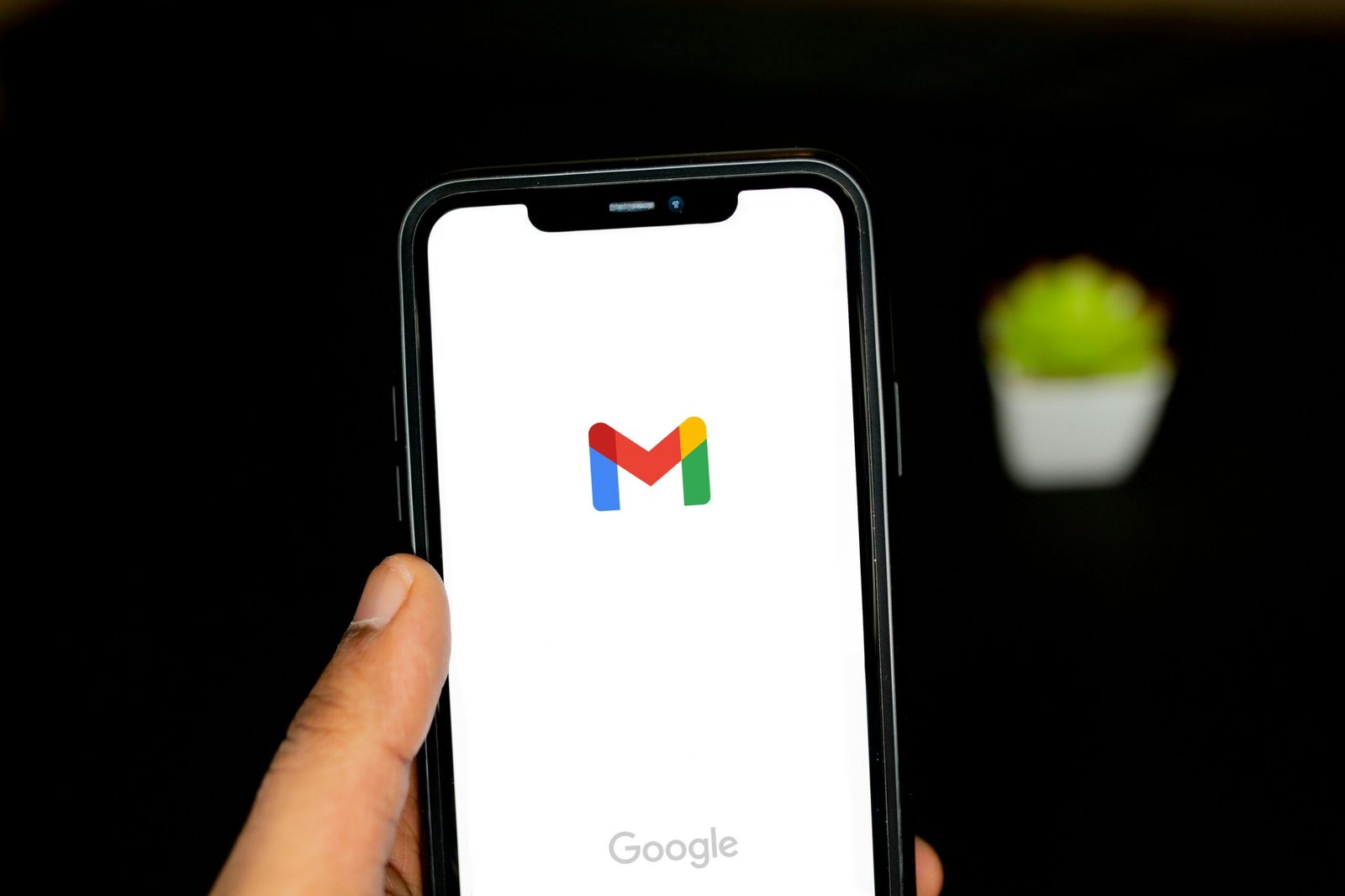Understanding the Importance of a Landing Page
In the competitive landscape of B2B marketing, a landing page serves as a critical touchpoint that facilitates lead generation and conversion. Unlike standard web pages, which may provide general information about a business, a landing page is specifically designed to capture a visitor’s interest by presenting focused content tailored to their needs. By doing so, it creates an environment where potential clients are encouraged to engage with the offered services. The effectiveness of a landing page lies in its ability to simplify the decision-making process.
A well-structured landing page articulates value propositions clearly and concisely. This is achieved through an effective combination of compelling headlines, succinct descriptions, and strong calls to action. These elements work synergistically to convince visitors that the services provided align with their requirements. Additionally, incorporating testimonials, case studies, and detailed service descriptions can help to establish credibility, ultimately guiding prospects toward the desired action, such as filling out a contact form or subscribing to a newsletter.
The design and layout of a landing page also play vital roles in engaging visitors. High-quality visuals, such as images and videos, can effectively complement written content, making it easier for potential clients to understand the services offered. Moreover, ensuring mobile optimization is crucial, as many users access websites via mobile devices. A seamless user experience enhances the likelihood of conversion.
In essence, landing pages are pivotal in the B2B marketing ecosystem. They serve not just as a digital interface but as strategic tools that bridge the gap between initial interest and final conversion. By creating a focused space that aligns with your business goals while addressing the needs of potential clients, your landing page can become an invaluable asset in generating leads and fostering business growth.
Identifying Your Target Audience
Understanding your target audience is crucial when creating a high-converting B2B professional services landing page. A well-defined audience ensures that your messaging aligns with their needs, thus increasing engagement and conversion rates. The first step in this process is to develop detailed buyer personas, which represent your ideal clients based on various factors such as demographics, industry, and behavior patterns. Start by gathering quantitative and qualitative data through surveys, interviews, and market research. This information can provide insight into who your customers are, what challenges they face, and how your services can help alleviate their pain points.
Once you have a clear understanding of your buyer personas, the next step is to analyze their pain points. Consider the specific challenges and obstacles your target audience encounters in their business operations. For instance, are they struggling with efficiency, compliance, or technology integration? Identifying these pain points enables you to tailor your landing page content to directly address the issues that matter most to your potential clients. This strategic alignment of your services with their needs positions you as a viable solution provider, increasing the likelihood of conversion.
Moreover, it is essential to ensure that the landing page resonates with your audience’s specific needs and preferences. Language, tone, and imagery should reflect the values and aspirations of your target demographic. Incorporating testimonials or case studies that speak to similar challenges faced by past clients can help build trust and credibility. By addressing the particular needs of your audience and presenting your services as compelling solutions, you can create a landing page that not only captures attention but also drives action, resulting in higher conversion rates.
Crafting Compelling Headlines and Subheadings
In the realm of B2B professional services, the significance of engaging headlines and subheadings cannot be overstated. These elements serve as the first point of contact between your content and potential clients, ultimately determining whether they will stay on your landing page. To cultivate interest and drive conversion, it is crucial to focus on clarity, urgency, and resonance in your messaging.
Firstly, the headline must communicate the primary value proposition succinctly. Effective headlines usually incorporate action words or phrases that evoke a sense of importance and relevance to the target audience. For instance, instead of a generic title, opt for something like “Transform Your Business with Expert Consulting Services” to immediately signify the benefits they may gain. This action-oriented language not only captivates attention but also identifies the service’s direct impact on their situation.
Additionally, subheadings play a vital role in guiding readers through the content. They should be designed to amplify the main headline, breaking down elaborate ideas into digestible segments. Using keywords related to professional services can help in engaging the reader and enhancing SEO performance, thus attracting more relevant traffic. A subheading like, “Unlock Growth Strategies Tailored to Your Business Needs,” effectively reinforces the headline while pressing on the potential urgency for solutions.
Moreover, creating a sense of urgency can be a potent motivator. Phrases like “Limited Time Offer” or “Get Started Today” not only spark action but also encourage potential clients to engage with your services sooner rather than later. Ultimately, the goal is to evoke curiosity while ensuring that your messaging remains clear and impactful. Strategic crafting of headlines and subheadings can significantly enhance the performance of your B2B landing page, steering visitors towards conversion.
Designing an Intuitive Layout
Creating a high-converting B2B professional services landing page necessitates a thoughtful approach to visual design elements. One of the primary considerations is the layout structure. An intuitive layout serves as the backbone of effective communication between your business and potential clients. A well-structured layout guides users through essential information in a logical flow, increasing the likelihood of conversion.
Color psychology plays a pivotal role in shaping user emotions and behaviors. Selecting a color scheme that aligns with your brand while also resonating with your target audience can greatly influence their perceptions. For instance, blue often conveys trust and reliability, making it a popular choice for B2B services. Conversely, vibrant colors might be employed to draw attention to specific calls-to-action (CTAs). Thus, strategically applying color can enhance visual appeal while promoting critical actions on your landing page.
Another vital aspect of designing a high-converting landing page is typography. The choice of fonts should reflect professionalism and clarity, ensuring readability across various devices. Typically, sans-serif fonts are preferred for digital content due to their clean lines and modern look. Proper font sizes and weights can guide readers’ attention to key messages, improving overall comprehension and engagement. It’s essential to maintain a balance between style and legibility.
Furthermore, the use of white space cannot be overstated. Adequate spacing between elements helps to reduce cognitive overload and allows users to focus on core content. This “breathing room” not only enhances readability but also creates a more polished and professional appearance. Effective use of white space can ultimately drive engagement and ensure users have a positive interaction with your landing page.
Incorporating Strong Calls to Action (CTAs)
In the competitive landscape of B2B professional services, integrating strong Calls to Action (CTAs) on landing pages is crucial for maximizing conversions. A well-designed CTA not only guides potential clients towards making a decision but also enhances user experience by providing clear direction. The effectiveness of a CTA hinges on several key elements: placement, wording, and design.
Placement is paramount; CTAs should be strategically positioned where they can easily capture the attention of visitors. It’s advisable to place them at the top of the landing page, allowing immediate visibility as users arrive. Moreover, including additional CTAs throughout the content can reinforce the desired action, particularly after key arguments are presented. This ensures prospects encounter the CTAs multiple times without feeling intrusive.
Equally important is the wording of the CTAs. Effective CTAs use action-oriented language that encourages users to engage. Phrases such as “Get Started,” “Request a Free Consultation,” or “Download Our Guide” can resonate well with potential clients. The language should convey urgency and clarity, minimizing any ambiguity about the action that users are expected to take. Furthermore, using first-person language can create a personalized experience, for instance, “Yes, I want to enhance my business growth!”
Design also plays a critical role in the effectiveness of CTAs. They should be visually distinct from the surrounding elements to draw attention. Utilizing contrasting colors, sizeable fonts, and ample white space can significantly enhance their visibility. Additionally, ensuring that CTAs are responsive across all devices is necessary to cater to the growing number of users accessing websites via smartphones and tablets.
However, there are common mistakes that should be avoided when creating CTAs. Overloading the landing page with too many CTAs can overwhelm visitors, leading to decision paralysis. Instead, prioritize a few prominent CTAs that effectively communicate the primary conversion goals. By focusing on clarity, action-oriented language, strategic placement, and appealing design, businesses can significantly improve the performance of their B2B landing pages.
Utilizing Social Proof and Testimonials
In the realm of B2B marketing, social proof serves as a vital tool in establishing credibility and fostering trust among potential clients. When prospective customers encounter your professional services landing page, they are often met with uncertainty regarding the quality and effectiveness of the offerings. By showcasing social proof, businesses can mitigate this uncertainty and significantly enhance conversion rates.
Social proof can take various forms, including testimonials, case studies, client logos, and industry awards. Testimonials are particularly impactful; they provide firsthand accounts from satisfied clients who have experienced the benefits of your services. To gather effective testimonials, actively seek feedback following the completion of a project. Create a structured process that encourages clients to share their thoughts and highlight specific results. Use prompts, such as questions about how your services addressed their pain points or improved their business outcomes, to elicit detailed responses that resonate with potential customers.
In addition to testimonials, case studies provide an in-depth narrative that illustrates the challenges a client faced, the solutions provided by your services, and the resultant successes. This format not only validates your expertise but also demonstrates the tangible impact your services can have. Displaying well-designed case studies on your landing page or within a dedicated section enhances your credibility and allows potential clients to visualize their success.
Moreover, incorporating recognizable client logos can further establish trust. Companies are more likely to engage with a provider that has already earned the confidence of reputable organizations. To optimize your landing page, ensure that these elements are prominently featured and easy to find—either through a dedicated testimonials section or integrated within the overall design. By effectively utilizing social proof, you enhance the persuasive power of your landing page, ultimately leading to higher conversion rates.
Optimizing for SEO and Fast Loading Speed
In the competitive landscape of B2B professional services, creating a high-converting landing page requires a strategic approach to search engine optimization (SEO) and fast loading speeds. SEO is crucial for enhancing visibility in search engine results, ultimately driving organic traffic to the landing page. The first step in effective SEO is conducting thorough keyword research to identify relevant terms that potential clients are likely to search for. Tools like Google Keyword Planner and SEMrush can assist in discovering keywords that align with your services and audience intent.
Once you have identified the target keywords, it is essential to incorporate them naturally into your landing page content. This includes the page title, headers, meta descriptions, and within the body text. On-page SEO techniques, such as optimizing image alt texts and ensuring proper URL structure, contribute significantly to the page’s performance. Additionally, using internal and external links strategically can enhance credibility and improve search engine rankings.
Aside from SEO, the loading speed of the landing page plays a pivotal role in user experience and conversion rates. Research indicates that even a one-second delay in loading time can lead to a loss of potential customers. To ensure fast loading speeds, consider optimizing images by compressing them without losing quality and leveraging browser caching to enhance performance. Furthermore, utilize content delivery networks (CDNs) to decrease server response times and improve access speed for users across various geographical locations.
To monitor and track the effectiveness of your SEO strategies and loading speed, tools such as Google PageSpeed Insights and GTmetrix can provide valuable insights. By regularly assessing and optimizing these elements, businesses can create landing pages that not only attract visitors but also convert them into clients effectively.
A/B Testing for Continuous Improvement
A/B testing is an essential strategy in refining the effectiveness of a B2B professional services landing page. This method involves comparing two variations of a webpage to determine which one performs better in terms of conversion rates. By methodically altering individual elements, such as headlines, images, and calls to action (CTAs), businesses can gain valuable insights into user preferences and behaviors.
To initiate A/B testing, select one element to modify. For example, consider changing the headline to test its impact on user engagement. A compelling headline is crucial as it’s one of the first elements visitors will notice. After implementing the change, it’s essential to run the test for a defined period to collect sufficient data. Tools like Google Optimize or Optimizely can assist in managing these experiments effectively.
Measuring performance is paramount. Focus on key performance indicators (KPIs) such as conversion rates, bounce rates, and time on the page. A higher conversion rate would indicate that the new element resonates better with visitors, whereas a low conversion rate may suggest the need for further adjustments. Analyzing this data can reveal trends and preferences that will inform future modifications.
Moreover, integrating user feedback can enhance the A/B testing process. Conduct surveys or gather qualitative insights to complement your quantitative data. These insights can reveal the motivations behind users’ actions, allowing for a deeper understanding of what drives conversions on your landing page. Based on analytics and feedback, iterate on your design and messaging to create a landing page that meets the needs of your target audience more effectively.
A/B testing should be viewed as a continuous improvement process rather than a one-time strategy. Engaging in regular testing and optimization will ultimately lead to a higher-performing landing page, ensuring that your B2B professional services effectively capture leads and conversions.
Analyzing Landing Page Performance Metrics
To ensure the effectiveness of your B2B professional services landing page, it is crucial to track key performance indicators (KPIs) that provide insights into its performance. Among these metrics, conversion rates, bounce rates, and visitor engagement are integral to evaluating how well your landing page meets its objectives.
Conversion rates refer to the percentage of visitors who take the desired action, such as completing a form or signing up for a newsletter. This metric is vital, as it directly reflects the landing page’s effectiveness in persuading visitors to engage with your services. A high conversion rate indicates a compelling page design, effective copy, and a clear call to action. Analyzing this data can help identify which elements are working and which may need adjustment.
Bounce rates, on the other hand, represent the percentage of visitors who leave the landing page without interacting with it. A high bounce rate may suggest that the content is not relevant to the audience, or that the page is not user-friendly. By monitoring this metric, you can adapt your content and design to better align with your visitors’ expectations, ultimately leading to increased engagement.
Visitor engagement metrics, including time spent on the page and interactions per visit, offer additional insights into how users interact with your landing page. If visitors stay longer and engage with multiple elements on the page, it indicates that the content is resonating well with them. Utilizing analytics tools such as Google Analytics can help you track these metrics effectively. These insights allow for data-driven decisions, facilitating ongoing optimization of your landing page to ensure it remains high-converting.
In conclusion, focusing on these key performance metrics will enable you to create a more effective landing page that resonates with your B2B audience. Continuous analysis and refinement are essential to achieving and maintaining high conversion rates.




